Leopard Shark Makes World-first Switch From Sexual To Asexual Reproduction


Leopard shark makes world-first switch from sexual to asexual reproduction
A leopard shark in an Australian aquarium has reproduced asexually after being separated from her mate.
It is the first reported case of a shark switching from sexual to asexual or parthenogenetic reproduction and only the third reported case among all vertebrate species.
The leopard shark, Leonie, was captured in the wild in 1999 and introduced to a male shark at the Reef HQ aquarium in Townsville, Queensland, in 2006. Leopard sharks are also known as zebra sharks.
One of the baby sharks born to leopard sharks at Reef HQ aquarium in Townsville, who have produced live young through asexual reproduction. Photograph: Tourism and Events Queensland
Leonie, the world’s first shark known to have switched from sexual to asexual reproduction, at Reef HQ aquarium in Townsville. Photograph: Tourism and Events Queensland
More Posts from Contradictiontonature and Others
Toxic Alzheimer’s Protein Spreads Through Brain Via Extracellular Space
A toxic Alzheimer’s protein can spread through the brain—jumping from one neuron to another—via the extracellular space that surrounds the brain’s neurons, suggests new research from Karen Duff, PhD, and colleagues at Columbia University Medical Center.

(Image caption: Orange indicates where tau protein has traveled from one neuron to another. Credit: Laboratory of Karen Duff, PhD)
The spread of the protein, called tau, may explain why only one area of the brain is affected in the early stages of Alzheimer’s but multiple areas are affected in later stages of the disease.
“By learning how tau spreads, we may be able to stop it from jumping from neuron to neuron,” says Dr. Duff. “This would prevent the disease from spreading to other regions of the brain, which is associated with more severe dementia.”
The idea the Alzheimer’s can spread through the brain first gained support a few years ago when Duff and other Columbia researchers discovered that tau spread from neuron to neuron through the brains of mice.
In the new study, lead scientist Jessica Wu, PhD, of the Taub Institute discovered how tau travels by tracking the movement of tau from one neuron to another. Tau, she found, can be released by neurons into extracellular space, where it can be picked up by other neurons. Because tau can travel long distances within the neuron before its release, it can seed other regions of the brain.
“This finding has important clinical implications,” explains Dr. Duff. “When tau is released into the extracellular space, it would be much easier to target the protein with therapeutic agents, such as antibodies, than if it had remained in the neuron.”
A second interesting feature of the study is the observation that the spread of tau accelerates when the neurons are more active. Two team members, Abid Hussaini, PhD, and Gustavo Rodriguez, PhD, showed that stimulating the activity of neurons accelerated the spread of tau through the brain of mice and led to more neurodegeneration.
Although more work is needed to examine whether those findings are relevant for people, “they suggest that clinical trials testing treatments that increase brain activity, such as deep brain stimulation, should be monitored carefully in people with neurodegenerative diseases,” Dr. Duff says.








Feeling a little small? Well in the context of the cosmos, we are small. We may just be little guys living on a speck of dust, afloat in a staggering immensity…
…but we dont think small.

WHAT??? Time to update those textbooks.
Did life begin on land rather than in the sea?
Stromatolites are round, multilayered mineral structures that range from the size of golf balls to weather balloons and represent the oldest evidence that there were living organisms on Earth 3.5 billion years ago.
Scientists who believed life began in the ocean thought these mineral formations had formed in shallow, salty seawater, just like living stromatolites in the World Heritage-listed area of Shark Bay, which is a two-day drive from the Pilbara.
But what Djokic discovered amid the strangling heat and blood-red rocks of the region was evidence that the stromatolites had not formed in salt water but instead in conditions more like the hot springs of Yellowstone.
The discovery pushed back the time for the emergence of microbial life on land by 580 million years and also bolstered a paradigm-shifting hypothesis laid out by UC Santa Cruz astrobiologists David Deamer and Bruce Damer: that life began, not in the sea, but on land.
Stromatolites.Credit: © Ints / Fotolia
Dive deep into Episode 05 of #ShelfLife to discover the various technologies that have helped humans map the sky around us for eons.

From sundials to mega-powered modern telescopes, tools for stargazing allow us to understand the universe—and our place within it. Season 2 begins on November 1.





Archbishop Ussher’s chronology was taken as gospel in the Western world. Until we turned to another book to find the age of the earth, the one that was written in the rocks themselves.
DNA from the deep? Antikythera shipwreck yields ancient human bones
Death, when it came, was sudden and cruel. The individual, either a crew member or passenger, was trapped on board when the huge ship foundered. Dashed on the rocks, the vessel slid beneath the waves, tumbled down an undersea cliff, and swiftly became buried in sediment on the seabed.
Now, more than 2,000 years later, archaeologists have recovered the bones of the individual they now call Pamphilos. Thought to be a man in his late teens to early 20s, he was on the ship sailing from Asia Minor to Rome when disaster struck off the tiny Greek island of Antikythera between Crete and the Peloponnese.
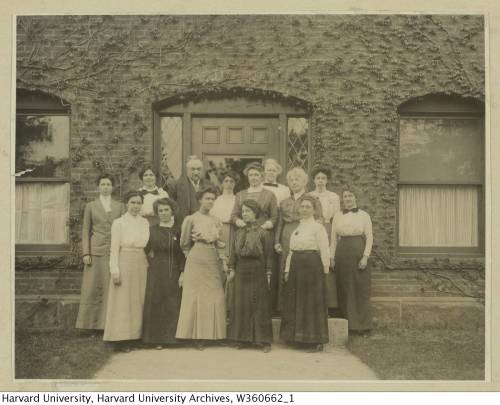
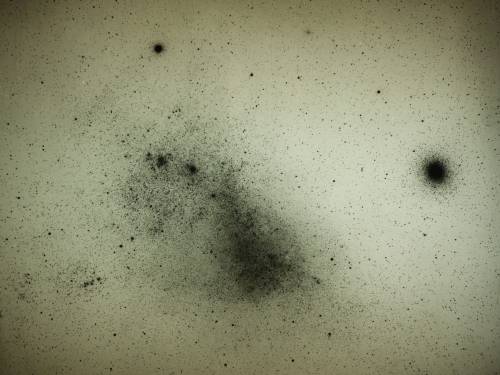
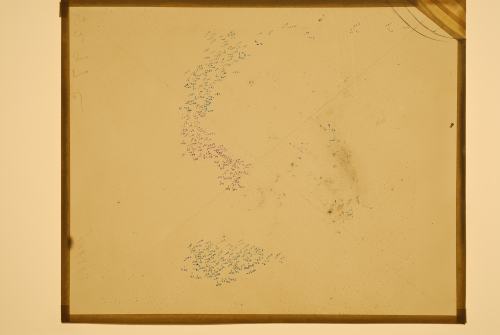
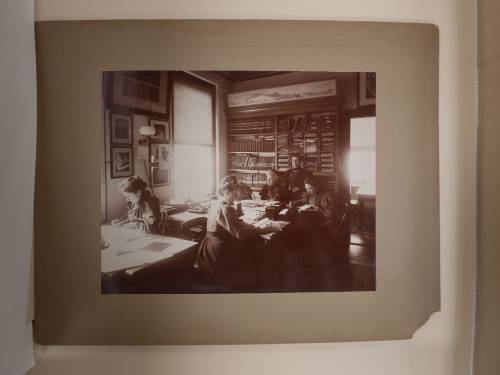
This team of early female astronomers created the star classification system we use today.
In the late 19th century, astronomy was a growing field. At the time, Edward Pickering, the director of the Harvard College Observatory, was working to create a classification system for stars by capturing the light from these distant celestial objects onto photographic glass plates. A team of female assistants and astronomers meticulously maintained and analyzed these delicate negatives. In her new book, The Glass Universe: How the Ladies of the Harvard Observatory Took the Measure of the Stars, Dava Sobel shares the stories of these female “human computers” and how their work helped to advance the field of astronomy and the role of women in science.
This team of astronomers included Williamina Fleming, who was once Pickering’s maid but eventually became a supervisor to the group and went on to identify hundreds of variable stars. And Henrietta Swan Leavitt’s observations about the luminosity of stars would shape later ideas about the expanding universe.
Listen to the interview here.
[Photos courtesy of The Glass Universe]
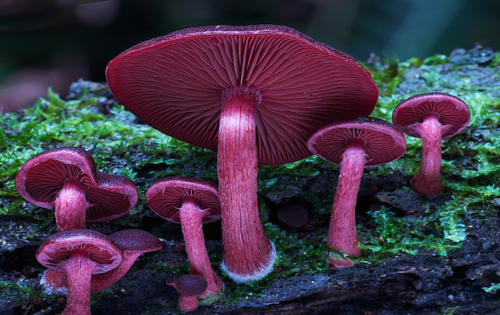
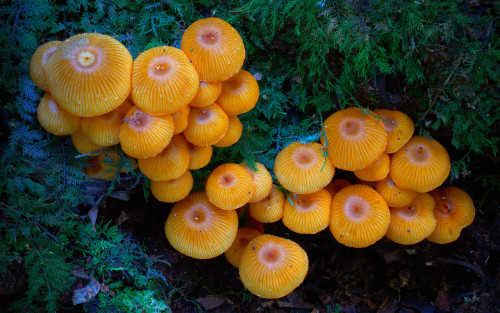
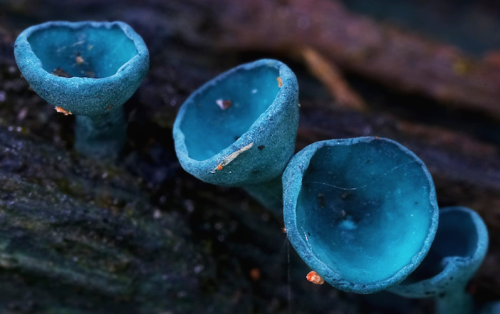
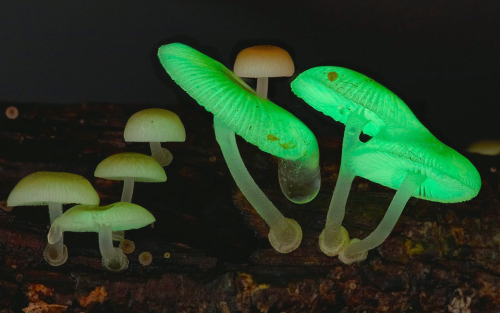

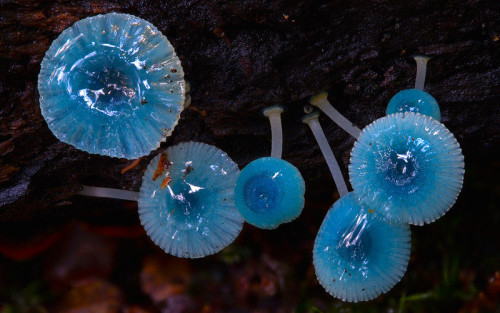
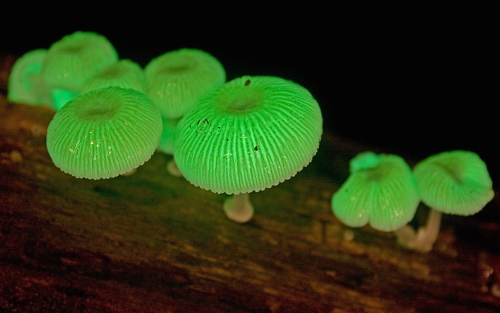
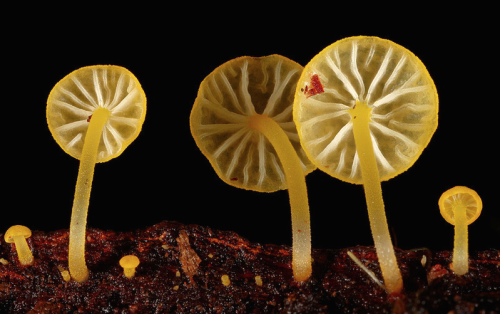
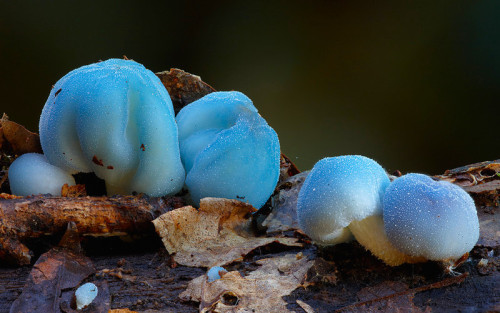
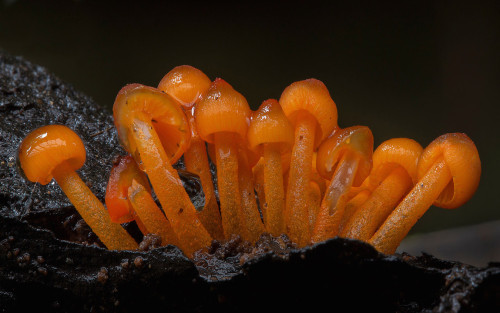
a mushroom rainbow to put the fun in fungi. cause they don’t need psilocybin to be magic. and though some mushrooms are coloured as a toxicity warning to predators, many others are brightly coloured to instead attract potential spore dispersers. see this for more on the bioluminescent mushrooms seen here. (photos)

It’s a tremendous Trilobite Tuesday!
When most of us think about trilobites, we imagine rather small creatures that inhabited the ancient seas. Indeed, most members of the more than 25,000 scientifically recognized trilobite species were less that three inches in length. Occasionally, however, paleontologists encounter a megafauna where, due to a variety of circumstances, the trilobite species were huge. One of these megafaunas can be found near the small Portuguese town of Arouca where the 450 million year-old Valongo formation produces prodigious numbers of exceptionally large Ordovician-age trilobites, such as this 41 cm Hungioides bohemicus. Other trilobite magafaunas appear sporadically around the globe, including Cambrian locations in Morocco and Devonian outcrops in Nevada.
Meet many more trilobites on the Museum website.
-
 dualscreendamage liked this · 6 years ago
dualscreendamage liked this · 6 years ago -
 naturalscienceve reblogged this · 6 years ago
naturalscienceve reblogged this · 6 years ago -
 naturalscienceve reblogged this · 6 years ago
naturalscienceve reblogged this · 6 years ago -
 bleptongue liked this · 7 years ago
bleptongue liked this · 7 years ago -
 vestaroid liked this · 7 years ago
vestaroid liked this · 7 years ago -
 mindlessmunkey reblogged this · 7 years ago
mindlessmunkey reblogged this · 7 years ago -
 huinyang-blog liked this · 7 years ago
huinyang-blog liked this · 7 years ago -
 kittiescatscats liked this · 7 years ago
kittiescatscats liked this · 7 years ago -
 youcaneven liked this · 7 years ago
youcaneven liked this · 7 years ago -
 le-hibou-sarcastique liked this · 7 years ago
le-hibou-sarcastique liked this · 7 years ago -
 digiothy liked this · 7 years ago
digiothy liked this · 7 years ago -
 frozenbullies liked this · 8 years ago
frozenbullies liked this · 8 years ago -
 resonatingnarratives reblogged this · 8 years ago
resonatingnarratives reblogged this · 8 years ago -
 resonatingnarratives reblogged this · 8 years ago
resonatingnarratives reblogged this · 8 years ago -
 axumite7 reblogged this · 8 years ago
axumite7 reblogged this · 8 years ago -
 axumite7 liked this · 8 years ago
axumite7 liked this · 8 years ago -
 hereforthatgayrep liked this · 8 years ago
hereforthatgayrep liked this · 8 years ago -
 randomofo reblogged this · 8 years ago
randomofo reblogged this · 8 years ago -
 thetelle17 liked this · 8 years ago
thetelle17 liked this · 8 years ago -
 shipping-addict liked this · 8 years ago
shipping-addict liked this · 8 years ago -
 captainbaralover liked this · 8 years ago
captainbaralover liked this · 8 years ago -
 kizurai reblogged this · 8 years ago
kizurai reblogged this · 8 years ago -
 kizurai liked this · 8 years ago
kizurai liked this · 8 years ago -
 musicalfeellings liked this · 8 years ago
musicalfeellings liked this · 8 years ago -
 mclover666 reblogged this · 8 years ago
mclover666 reblogged this · 8 years ago -
 mclover666 liked this · 8 years ago
mclover666 liked this · 8 years ago -
 idontcarejustgivemethis reblogged this · 8 years ago
idontcarejustgivemethis reblogged this · 8 years ago -
 idontcarejustgivemethis liked this · 8 years ago
idontcarejustgivemethis liked this · 8 years ago -
 yaminoendo reblogged this · 8 years ago
yaminoendo reblogged this · 8 years ago -
 yaminoendo liked this · 8 years ago
yaminoendo liked this · 8 years ago -
 rice-bun liked this · 8 years ago
rice-bun liked this · 8 years ago -
 showaddict liked this · 8 years ago
showaddict liked this · 8 years ago -
 lovelylizzylady reblogged this · 8 years ago
lovelylizzylady reblogged this · 8 years ago -
 akemi-13 reblogged this · 8 years ago
akemi-13 reblogged this · 8 years ago -
 rushemiiaah reblogged this · 8 years ago
rushemiiaah reblogged this · 8 years ago -
 rushemiiaah liked this · 8 years ago
rushemiiaah liked this · 8 years ago -
 rogueazure reblogged this · 8 years ago
rogueazure reblogged this · 8 years ago -
 angstbotfic reblogged this · 8 years ago
angstbotfic reblogged this · 8 years ago -
 lehorlabitch-blog reblogged this · 8 years ago
lehorlabitch-blog reblogged this · 8 years ago -
 lehorlabitch-blog liked this · 8 years ago
lehorlabitch-blog liked this · 8 years ago -
 thisistab liked this · 8 years ago
thisistab liked this · 8 years ago -
 mekachu04 liked this · 8 years ago
mekachu04 liked this · 8 years ago -
 scienceystuf reblogged this · 8 years ago
scienceystuf reblogged this · 8 years ago
A pharmacist and a little science sideblog. "Knowledge belongs to humanity, and is the torch which illuminates the world." - Louis Pasteur
215 posts
